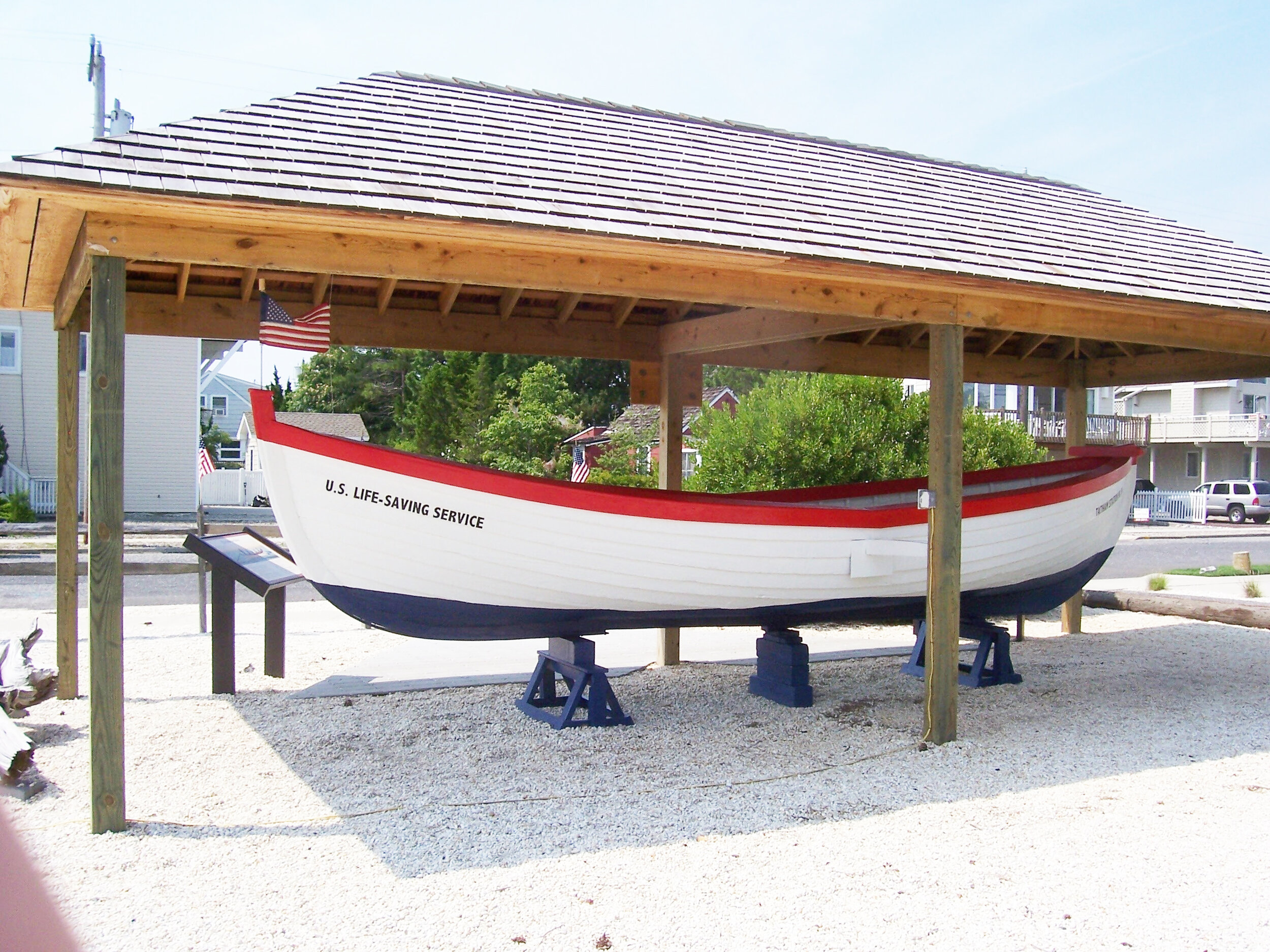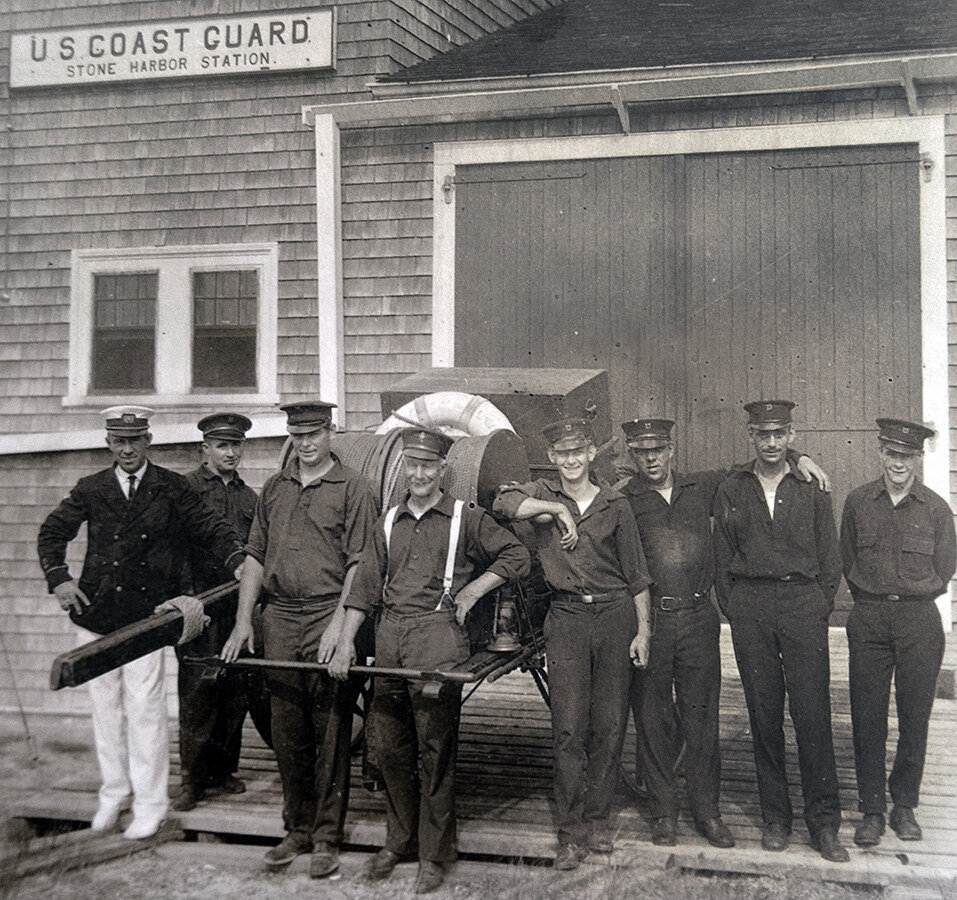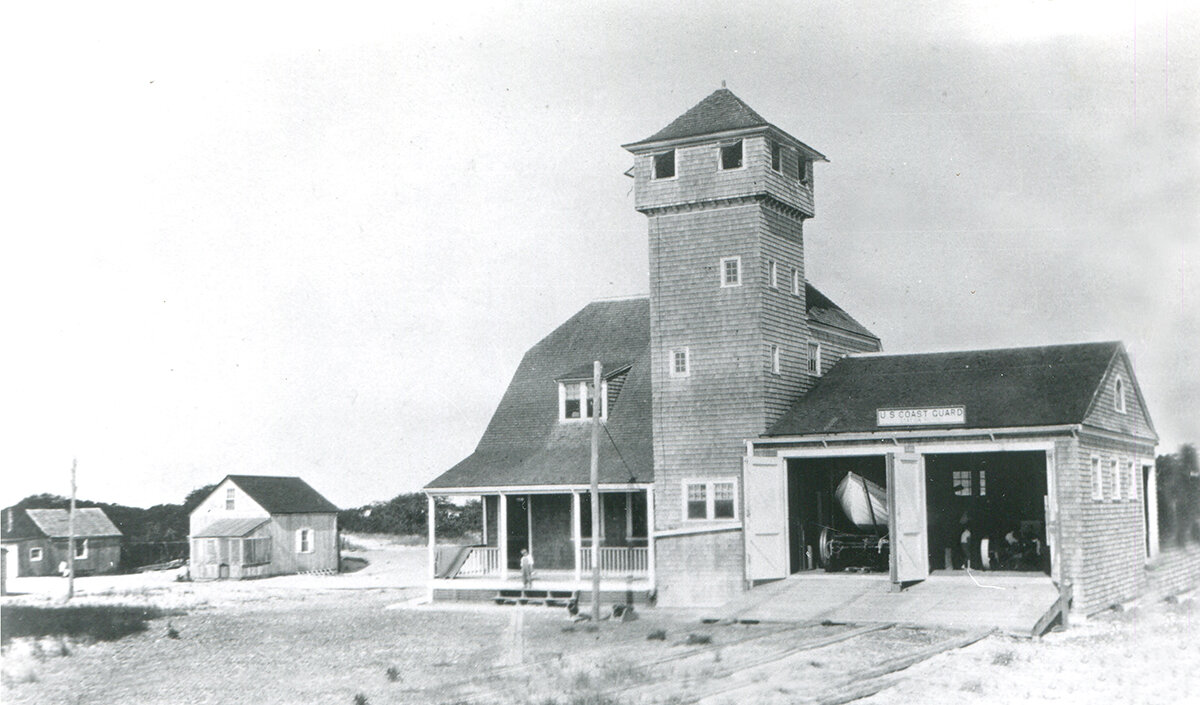125 Years of Service: The Post 331 Building Might Be the Best Dollar the American Legion Ever Spent
Stone Harbor’s U.S. Life Saving Station in 1895.
Throughout the 1800s, there was a great amount of sea traffic up and down the New Jersey coastline thanks to major ports in New York, Baltimore and Philadelphia. The waters were well known as being treacherous and dangerous to navigate; a ship that became stranded on one of the many offshore sandbars in heavy seas usually broke into pieces within a few hours, often with a large loss of life.
More than 120 shipwrecks and strandings occurred off the shores of Avalon, Stone Harbor, and in or near Townsends Inlet and Hereford Inlet from 1820 to 1900, according to the New Jersey Maritime Museum’s Shipwreck database. To help rescue crews and passengers on the stricken ships, life-saving stations were built along the shoreline, and in 1878 the United States Life-Saving Service (USLSS) was organized as a separate agency of the Treasury Department.
By the mid-1890s, several life-saving stations were on or near Seven Mile Island: at Hereford Inlet; Stone Harbor (Tathams), located about 2½ miles northeast of Hereford Light; Avalon, about 5½ miles north of Stone Harbor; Townsends Inlet (near the Inlet, north side), and Sea Isle City, 3¼ miles north of the Townsends Inlet station.
Some of those life-saving stations have survived many years of storms and shipwrecks, including the ones in Avalon, which today is a private residence, and in Stone Harbor, currently the home of the American Legion’s Stephen C. Ludlam Post 331. Located on 117th Street and Second Avenue, the station celebrates its 125th anniversary this year, and is the oldest building in Stone Harbor. It’s listed in the National Register of Historic Places.
The building’s history begins in December 1893, when the U.S. government paid $600 to the Seven Mile Beach Company for the lease of several parcels of land in Stone Harbor in perpetuity, and within two years built Life-saving Station #35, also called Tathams Station.
“There was an earlier life-saving station around 1852-55 at 80th Street and First Avenue,” says Art Faint, the historian of Post 331. “It was rudimentary; it had equipment and a keeper. There were volunteer surfmen for rescues.”
A restored surfboat that was used to rescue shipwreck survivors.





Upon its construction in 1895, Stone Harbor’s life-saving station housed surfmen and a keeper who received salaries; the station was built in the Duluth architectural design featuring a Shingle style with Colonial Revival detailing, as was Avalon’s, with a boatroom, tower, and living quarters. According to the station’s physical description on the National Register of Historic Places registration form, it was “originally located on the beach, (and) the structure now stands two blocks west of the beach, due to sand deposits, the city building out, and the extension of Second Avenue.”
Rescues were primarily conducted by surfboat, which were taken to the water’s edge and launched into the waves. Surfmen then rowed the boat to the site of the shipwreck and pulled survivors aboard to be taken ashore to safety.
“In December 1912, there was a phenomenal rescue offshore on the tugboat Margaret,” Faint says. “During a storm and in heavy seas, the Margaret’s engines shut off and the barges it was towing were let go. Our station sent out a life-saving team along with the Avalon station; many of the surfmen received the Gold Life-saving Medal from the Department of Treasury for their bravery.”
The Gold Life-saving Medal was awarded to individuals who “performed a rescue or attempted rescue at the risk of his or her own life, and demonstrated extreme and heroic daring,” according to the laws governing the awarding of the medal.
Until 1915, the Stone Harbor station belonged to the USLSS. That year, the Revenue Cutter Service merged with the USLSS to become the U.S. Coast Guard, which took over the station operations; it was renamed Coast Guard Station #132.
The station was in use throughout both World Wars. Its distinctive tower was used to spot enemy ships offshore, as well as enemy agents on the beach.
In 1948, the station was deactivated because it was determined to be no longer needed. By that time, the Coast Guard had high-speed boats for rescues. In 1948, the Treasury Department issued a “declaration of abandonment,” which stated that the government had no need to use or occupy the premises, and so reverted back to the Seven Mile Beach Company.
“After the declaration of abandonment,” Faint says, “there was only one trustee left of the original Seven Mile Beach Company, and the station was conveyed to the American Legion for the sum of $1.”
The American Legion Post 331’s namesake is Pfc. Stephen C. Ludlam, who was killed in action at age 19 near Ostheim, France during the Battle of the Colmar Pocket on Jan. 23, 1945. According to information on the Fallen Heroes Project website, Ludlam’s company, part of the 7th Infantry’s Third Division, was caught in an open snow-covered field facing German automatic rifle fire from point-blank range. He battled the enemy for 45 minutes and was credited with saving many lives, as well as killing seven Germans, before being killed.
Ludlam was posthumously awarded the Distinguished Service Cross, an award second only in importance to the Medal of Honor, as well as a Purple Heart. Post 331 received permission from his parents, Jesse and Patience Ludlam of Stone Harbor, to name the new post in his honor.
“My hat goes off to the ‘Greatest Generation’ of World War II veterans who made the initial move at the time to purchase the property for only $1, when the building was only 53 years old,” says Tom McCullough, Commander of Post 331. “Through the years, the mayors and leadership of both Stone Harbor and Avalon boroughs have assisted and supported us, for which we’re so grateful. We couldn’t do what we do without them.”
Building restoration started in 2005 and continued through 2008 and 2009, according to Faint. Murals by James J. Thompson, a member of Post 331, were added to enhance the character of the building through a grant from the Cape May County Board of Chosen Freeholders and were completed as follows: “Building History” in 2006; “The Fallen Soldier” in 2007; “Life-Saving Operation” in 2007, and outside door murals in 2008.
Today, Post 331 continues to serve the country and community. In addition to American Legion and Sons of the American Legion monthly meetings, it’s also home to two museums: a life-saving museum on the first floor, and a military museum on the second floor. From the tower, one can experience the same views of the surrounding area and ocean that surfmen had while protecting the Stone Harbor beach and waters from enemies during a time of war. While the building is closed in February and March, members provide free museum tours to the public from Flag Day on June 14 through Labor Day.
Post 331 provides support to deployed military personnel and veterans, as well as to community programs and organizations. For the last decade, the Stone Harbor Seniors Club has conducted meetings and activities at the Post every week, and the use of the facility is free to nonprofit charitable organizations, including Stone Harbor lifeguard reunions.
“We are so lucky to have a building that plays such a dual role in the community,” says McCullough.
He says plans for a celebration of Post 331’s 125th anniversary are on hold due to the coronavirus pandemic. In 2021, Post 331 will celebrate the 75th anniversary of its charter, which occurred March 30, 1946, and McCullough said that it’s possible both anniversaries could be marked then.

